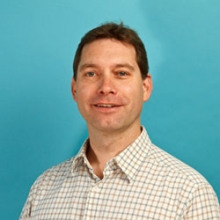The Gowers lab has expertise in gene cloning, protein purification, biochemical techniques, radioligand binding assays, biophysical analysis of nucleic-acid interactions and data analysis. We use these to study several nucleic-acid binding molecules, including DNA helicases, DNA ligases and DNA triple helices. The group is particularly interested in addressing how these site-specific proteins initially locate target sequences that are buried amongst large stretches of non-target DNA. We also collaborate actively with the Callaghan RNA lab on RNA-protein interactions.
Our current laboratory research
DNA helicases from p.falciparum
Plasmodium falciparum helicase 45 (PfH45) is a putative Superfamily 2 (SF2) nucleic acid helicase, predicted to be a 45 kDa monomeric protein with two distinct domains. In collaboration with Renu Tuteja (Malaria Grp, International Centre for Genetic Engineering & Biotechnology, New Delhi), we have investigated PfH45s biochemical and biophysical properties. This work was undertaken between 2009-2012 by Dr Luke Evans and Dr James Youell, and data on the codon optimisation, gene cloning, protein purification and helicase-unwinding assays has been published (Evans et al, 2012, Protein Expr. & Purif, 85, 1-8). The ongoing aim of this project is to elucidate their target site location mechanism prior to helicase action and also study whether ligands that inhibit PfH45 helicase (and PfDH60, another falciparum helicase) might be potential antimalarial candidates.
DNA ligase from e.coli
We are studying how the main repair enzyme of E.coli (LigA) locates nicks in the ribose-phosphate backbone of DNA; this is part of an ongoing collaboration with Dr Richard Bowater (School of Biological Sciences, UEA). A recent PhD student (Dr Claire Fraser) has completed a series of studies looking at the importance of AMP-containing cofactors, substrate order-of-addition studies, and length-dependency and processivity studies (unpublished) to look for evidence of facilitated diffusion and 1D vs. 3D protein motion on nicked DNA. The preliminary processivity results indicate that facilitated diffusion does occur, and that ligase is able to re-adenylate on or near-to the same chain prior to the next ligation step. The overall goal of this ongoing work is to discover how the ligase protein behaves on multiple-nicked substrates and investigate whether further protein partners (like the β-sliding clamp) are involved in vivo.
DNA triplexes
We are also examining the kinetics of DNA triple helix formation as a function of DNA chain length and flanking DNA sequence. One poorly understood aspect of triplex formation is the search mode used by a TFO to locate its target within a long chain of DNA, and whether or not a form of facilitated diffusion is used. This has been the work of a postdoc (Dr Athanasia Varsaki) and more recently an MPhil student (Mervyn Middleton), who both contributed to development of a radiolabelled competition assay, with work (unpublished) indicating that a form of facilitated diffusion may be in operation. Ultimately, the group aims to unravel more details of this mechanism.
RNA interactions
The Gowers lab works in close collaboration with the Callaghan RNA lab, particularly on radiolabelling, RNA-binding assays, quantitation and curve-fitting.
Contact our researchers

